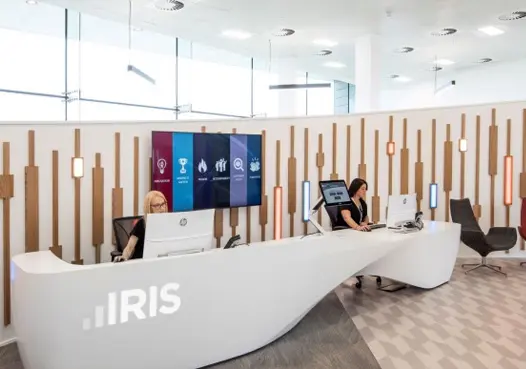BLOGS
Successfully Managing a Remote Workforce

The novel coronavirus (COVID-19) crisis has forced many companies to adapt to the ever-changing landscape of our nation’s workforce, and as a result, remote work is more common than ever before.
Enabling employees to work from home quickly emerged as an essential factor in keeping businesses running amidst social distancing recommendations and shelter in place orders. While conditions in some states have improved enough to allow some employees to begin returning to their workplaces, work-from-home policies will likely become a long term or even permanent factor for businesses moving forward.
Whether you decide to permit offsite work temporarily or permanently, here are some strategies to help maintain productivity when adopting a remote work culture.
Schedule structured daily communication: It is essential to communicate directly with remote employees on a regular basis. Many successful managers establish a daily call with their remote employees. This could take the form of a series of one-on-one calls, or a team call, to foster a sense of unity and connection and to keep employees on track with their goals and tasks. The key is that the calls are regular, predictable, and in a forum where employees feel comfortable collaborating as a team or consulting with you. Consistent interaction with each member of the team will ensure they feel included, valued and engaged.
Set immediate and clear expectations: Establish a work-from-home policy. Clarity is crucial for remote workers to be productive. Ensure all employees know your expectations. By letting your team know what you want, you can make sure you’re in sync with them. Transparency is integral in building a successful team culture. It is easier to gain trust with all employees and ensure they are comfortable with any questions or concerns, knowing you will do the same. When you're consistent with your expectations you’re cultivating inclusive and connected digital communities that thrive.
Provide a variety of communication options: Relying solely on email or phone communication may be insufficient. Remote workers benefit from broader technology, such as video conferencing and chat. Video conferencing gives participants the same visual cues they would have if they were face-to-face. These visual cues allow for greater mutual awareness and help reduce feelings of isolation. Video is also particularly useful for complex or sensitive conversations and comes across as more personal than written or audio communication alone. Another relatively simple tool that enables rapid real-time communication and encourages socialization and collaboration is Instant Messaging/Chat. Chat is more efficient than email because it allows messages to appear immediately, saving time.
Increase recognition: Rewarding and recognizing employees in times of turmoil is more important than ever. Effective recognition not only motivates the recipient and increases productivity, but also serves as an example to other employees of behavior to emulate. Recognition does not have to be monetary. Consider using video calling for “face-to-face” appreciation, public recognition, a personalized message or handwritten note. Being specific in recognizing your employees will maintain employee engagement and increase morale, motivation, and a sense of purpose, especially among employees who are already performing well.
Maintain camaraderie: The workplace is an important source of personal friendship and camaraderie. Employees enjoy engaging on a personal level and sharing their own personal news, especially during this time of increased isolation. On occasion, time can be allotted for team building conference calls structured to allow people to simply check in with each other or participate in some extracurricular activities. Get creative and have fun with it.












